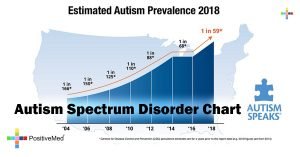
Despite heart disease being the leading cause of death for a century, a recent survey reveals that over half of US adults are unaware of this critical health fact. In this guide, we explore six simple yet effective ways to minimize your risk of heart disease, empowering individuals with the knowledge needed for a heart-healthy lifestyle.
1. Know Your Risk: The Foundation of Prevention
- Assess Personal Factors:
Understanding your risk involves considering factors such as cholesterol levels, family history, and lifestyle choices. A coronary calcium scan can further enhance risk evaluation, providing valuable insights into the likelihood of coronary heart disease.
2. Eat a Heart-Healthy Diet: Nourishing Your Cardiovascular System
- Choose Whole Foods:
Embrace a heart-healthy diet rich in whole and unprocessed foods, including whole grains, fruits, and vegetables. Limiting saturated and trans fats found in processed and deep-fried foods contributes to overall cardiovascular well-being.
- Embrace the Mediterranean Diet:
Following a Mediterranean diet, characterized by healthy protein sources and moderate carbohydrates, has shown significant benefits in reducing the rate of all-causes mortality, including heart disease.
3. Maintain a Healthy Weight: Curbing Obesity for Heart Health
- Combat Obesity-Related Risks:
Recognize obesity as a potent risk factor for heart disease, leading to conditions such as high blood pressure, elevated LDL cholesterol, and type 2 diabetes. Setting realistic weight loss goals and adopting a healthy diet and exercise routine are effective approaches.
4. Exercise Regularly: Boosting Cardiovascular Fitness
- Engage in Moderate Exercise:
Regular physical activity, including aerobic and weight-bearing exercises, contributes to lower blood pressure, regulated cholesterol levels, and healthy weight management. Aim for the recommended 150 minutes of exercise per week, incorporating activities you enjoy.
5. Quit Smoking: Breaking Free for Heart Health
- Understand Smoking’s Impact:
Smoking significantly increases mortality and plays a crucial role in atherosclerotic cardiovascular disease. Recognize the damage to blood vessels and heightened risk of plaque buildup, motivating a commitment to quit.
- Gradual Smoking Reduction:
Quitting smoking can be challenging, and gradual reduction, along with nicotine gum or lozenges, can support the process. Addressing this habit is crucial for reducing the risk of future heart attacks.
6. Decrease Stress: Managing Emotional Well-being
- Identify Stress Factors:
Acknowledge the impact of stress on cardiovascular health, including elevated blood pressure and inflammation. Recognize stressors from work, personal life, or socioeconomic factors, and prioritize their management.
- Incorporate Stress-Relief Strategies:
Implement stress-relief techniques such as meditation, yoga, deep breathing exercises, and maintaining a supportive social network. Cultivate hobbies that provide relaxation, and integrate movement into your daily routine.
Empowering individuals with knowledge about heart disease and its prevention is paramount in reshaping public awareness. By adopting these six simple strategies—knowing your risk, maintaining a heart-healthy diet, managing weight, regular exercise, quitting smoking, and stress reduction—you take proactive steps toward preserving your cardiovascular health. Guarding your heart becomes not only a preventive measure but a holistic commitment to a healthier and fulfilling life.





